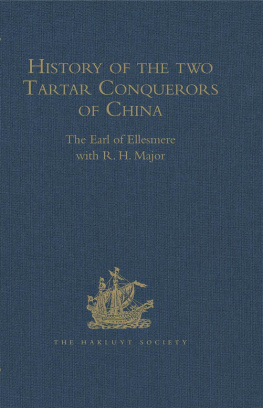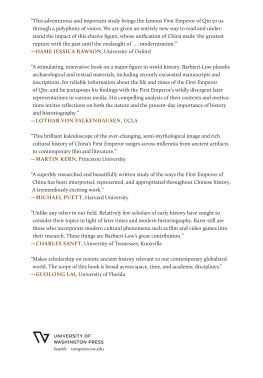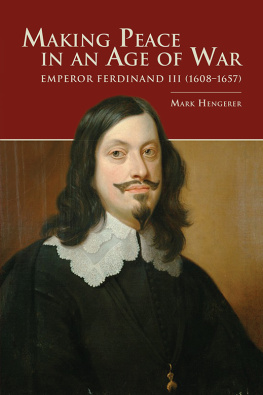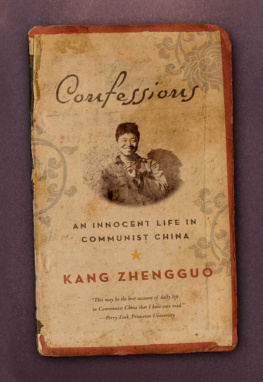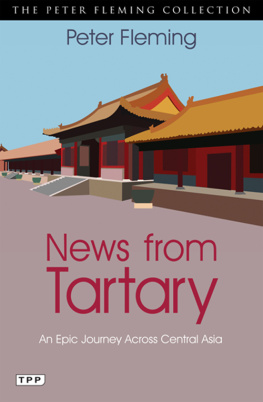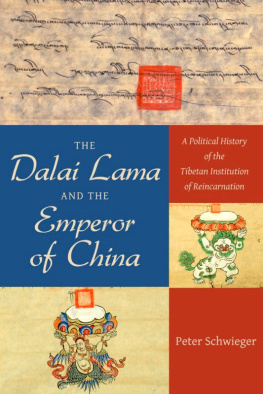First published by Ashgate Publishing
Published 2016 by Routledge
2 Park Square, Milton Park, Abingdon, Oxon OX14 4RN
711 Third Avenue, New York, NY 10017, USA
Routledge is an imprint of the Taylor & Francis Group, an informa business
All rights reserved. No part of this book may be reprinted or reproduced or utilised in any form or by any electronic, mechanical, or other means, now known or hereafter invented, including photocopying and recording, or in any information storage or retrieval system, without permission in writing from the publishers.
Notice:
Product or corporate names may be trademarks or registered trademarks, and are used only for identification and explanation without intent to infringe.
Founded in 1846, the Hakluyt Society seeks to advance knowledge and education by the publication of scholarly editions of primary records of voyages, travels and other geographical material. In partnership with Ashgate, and using print-on-demand and e-book technology, the Society has made re-available all 290 volumes comprised in Series I and Series II of its publications in both print and digital editions. For information about the Hakluyt Society visit www.hakluyt.com.
ISBN 13: 978-1-4094-1283-0 (hbk)
CONTENTS
WORKS ISSUED BY
The Hakluyt Society
HISTORY OF THE TWO TARTAR CONQUERORS OF CHINA.
M.DCCC.LIV.
HISTORY OF THE TWO TARTAR CONQUERORS OF CHINA,
INCLUDING THE TWO JOURNEYS INTO TARTARY OF FATHER FERDINAND VERBIEST, IN THE SUITE OF THE EMPEROR KANG-HI:
From the French of
PRE PIERRE JOSEPH DORLANS,
OF THE COMPANY OF JESUS,
TO WHICH IS ADDED FATHER PEREIRAS JOURNEY INTO TARTARY IN THE SUITE OF THE SAME EMPEROR,
From the Dutch of
NICOLAAS WITSEN.
TRANSLATED AND EDITED BY
THE EARL OF ELLESMERE,
With an Introduction
BY
R, H. MAJOR, E S Q,,
OF THE BRITISH MUSEUM,
HONORARY SECRETARY OF THE HAKLUYT SOCIETY.
LONDON:
PRINTED FOR THE HAKLUYT SOCIETY.
M.DCCC.LIV.
THE HAKLUYT SOCIETY.
SIR RODERICK IMPEY MURCHISON , G.C.St.S., F.R.S., Corr. Mem. Inst. Fr., Hon. Mem. Imp. Acad. Sc. St. Petersburgh, &c., &c., P RESIDENT .
T HE EARL OF ELLESMERE.
V ICE -P RESIDENTS .
C APT . C. R. DRINKWATER BETHUNE, R.N., C.B.
R EAB -A DMIRAL S IR FRANCIS BEAUFORT, K.C.B., F.R.S.
WILLIAM DESBOROUGH COOLEY, E SQ .
BOLTON CORNET, E SQ ., M.R.S.L.
THE R IGHT R EV . LORD BISHOP OF ST. DAVIDS.
R T . H ON . S IR DAVID DUNDAS.
S IR HENRY ELLIS, K.H., F.R.S,
JOHN FORSTER, E SQ .
R. W, GREY, E SQ .
JOHN WINTER JONES, E SQ .
H IS E XCELLENCY THE COUNT DE LAVRADIO.
S IR CHARLES LEMON, B ART ., M,P., F.R.S.
P. LEVESQUE, E SQ ., F.A.S.
S IR JOHN RICHARDSON, M.D.
T HE EARL SOMERS.
S IR GEORGE STAUNTON, B ART . F.R.S.
W. STIRLING, E SQ ., of Keir.
T HE R EV . W, WHEWELL, D.D.
R. H. MAJOR, E SQ ., F.R.G.S., H ONORARY S ECRETARY .
T HERE are two reasons why the selection of the present work for translation and publication by the Hakluyt Society, has been considered peculiarly appropriate and desirable. The one that, though bearing a title of a purely historical character, it embodies the observations of various missionaries in China, together with the highly interesting narratives of two journeys into Tartary in the years 1682 and 1683, made by the famous Jesuit father Ferdinand Verbiest, in the suite of the Chinese emperor. The other, that at a time like the present, when a revolution of the most formidable character has rendered the maintenance of the throne of China by the existing Tartar dynasty a matter of great uncertainty, the translation of a scarce work, by an author of celebrity, describing the establishment of that dynasty, seemed to have an especial claim upon the readers interest and attention.
As regards the former, and for the general purposes of the Hakluyt Society the more important of these two considerations, the period brought under our notice by the event treated of, is also one of remarkably prominent intrest in the history of European missions amongst the Chinese, a people to whom the penitus toto divisos orhe of Virgil might for many reasons so well be applied. In the introduction to Mendoza, edited for the Hakluyt Society by Sir George Staunton, the present writer has already given an account of the numerous painful and perilous attempts which had been made by Europeans, to establish themselves in this exclusive country, up to the close of the sixteenth century. The last effort there alluded to, and the first which was really successful, was that made by the distinguished Jesuit Matteo Ricci, who, in the year 1600, not only contrived to gain access to the emperor in Pekin, but in the following year had a house assigned to him, and was taken into the emperors service. To him, in fact, may justly be attributed the foundation of the Catholic mission. Once established at Pekin, no difficulties dismayed him; and to his zealous perseverance was added an extent of scientific knowledge, exactly coincident with the tastes of the Chinese, which, as a means towards success, was truly invaluable. His prudence in conciliating the prejudices of the Chinese, which by many has been stigmatized as a dereliction of principle, aided greatly in furthering his objects, and he gained both friends and converts in considerable numbers. Other Jesuits attached themselves to the mission, and settled themselves at various stations between the capital and Canton, and too much praise cannot be given to the zeal and intelligence with which these devoted men followed up the noble cause which they had undertaken. Indeed, so successful were their efforts, that as Sir John Day is has observed, in his valuable work on The Chinese, Had it not been for the narrow-minded bigotry and intolerance with which some of the popes, and the monks whom they deputed to China, frustrated the labours of the more sober-minded Jesuits, Europeans and their religion might at this day enjoy a very different footing in the empire. Ricci died in 1610, but during the reign of the emperor Wan-lee, the mission continued to be regarded with favour by the court until the year 1615, when through the jealousy of the Bonzes, a persecution was raised against the Christians, which resulted in stripes and imprisonment to many of them, and the expulsion to Macao of those who were in the neighbourhood of the court. Alvaro Semedo, who, in his Imperio de la China, has given an account of this persecution, himself only escaped the bastinado in consideration of a severe illness under which he was labouring. To this change in the conduct of the emperor Wan-lee, the author of the present volume, in his religious zeal, attributes as a retributive consequence the commencement of that revolution which not very long afterwards wrested the throne of China from the native or Ming dynasty.
It was in 1618, two years before the death of Wan-lee, that Tien-ming, a chieftain of the Manchu Tartars, and lineal ancestor of the present emperor, published a manifesto containing seven subjects of grievance which he proclaimed himself called upon to revenge. The fierce inroads of this daring warrior, who had already assumed the title of emperor, though not successful in securing the capital city of Pekin, were yet most formidable in their effects upon the stability of the throne. Numerous bodies of rebels, taking example from the boldness of the attempt, arose within the country itself, and thus exposed it to a more easy conquest by the common invader. Repulsed from the capital, which he had prepared to besiege, Tien-ming retired into the province of Leaotung, which he harassed with the most unsparing cruelties. Various success attended the progress of these political struggles for several years. Meanwhile the missionaries fared but ill, being exposed to frequent painful acts of persecution, though happily the edict of expulsion from the country was not absolutely carried into effect. The death of Wan-lee occurred in 1620, but it was not till 1622 that a reversal of the edict of expulsion of the missionaries was obtained, and a cessation of the persecution of so many years effected. This was brought about by the instrumentality of a native Christian, a mandarin of great talent and influence, whose Chinese name was Siu, but who at his baptism had received the name of Paul. His conversion had been effected by the arguments of Ricci, to whose prosperity, as well as that of the church at large, he had been able by his abilities, position, and zealous ardour in the Christian cause, to contribute most essentially. To him and his daughter Candida that cause was already indebted for the erection of thirty-nine churches in various provinces, and the printing of a hundred and thirty Christian works in Chinese, for the instruction of the people.

